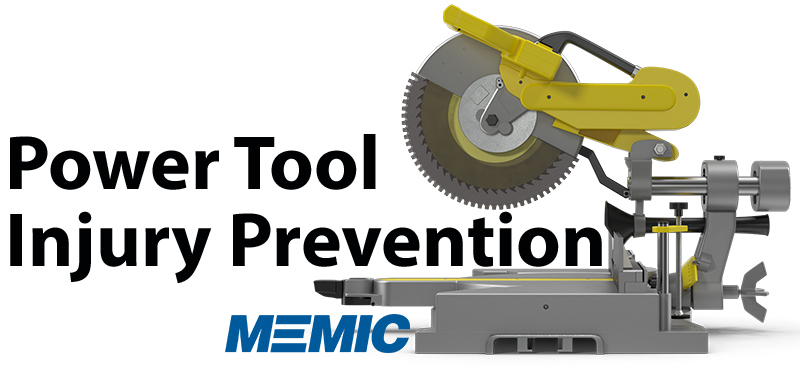Power Tool Injury Prevention
Last fall, I attended a conference where a vendor conducted a demonstration with a technology called Saw Stop. Saw Stop is a device that will stop and retract a rotating saw blade with lightening fast speed upon contact with human tissue, leaving hardly a scratch versus a potential amputation. The video demonstration on the website is very impressive, indeed. Though the vendor uses a hot dog to simulate a human finger for the demonstration, the point is clear: Power tools can be very dangerous.
This demonstration clearly raises the issue of power tools safety in general. If you don’t have technology like Saw Stop (which is more affordable than you might think, especially when you consider the cost of an accident), it’s important to be aware of the dangers that can be caused by power tools. According to the Power Tool Institute, three of the major causes of power tool injuries are:
- Inattention through repetition.This is most likely to occur at a busy jobsite or in a production shop. Hurrying to beat deadlines increases the risk of accidents and injuries. No matter how competent and confident the operator, he or she must not allow himself or herself to become complacent. Teach your employees to pause deliberately after every few repeat operations to refocus on the task at hand and then proceed with renewed awareness.
- Unexpected events. Because most power tools operate at high speeds, when things happen, they tend to happen very quickly. Unexpected events are more likely to end badly when operators are inexperienced, plan poorly or don’t understand how a particular tool works. Teaching your employees how to build and use jigs and fixtures that keep the workpiece under control and hands well away from blades and cutters is essential.
- Inexperience or overconfidence. Some people with many years of experience grow accustomed to working with their hands dangerously close to blades and cutters sometimes without protective guards in place. A sudden grab of the workpiece or a kickback condition can cause fingers or hands to be pulled into the cutter almost instantaneously. Experience, although a good teacher, can lull us into overconfidence. The foolish risks we take can inflict very painful lessons for us and our families. Teach your employees that risks like these are absolutely not acceptable.
For those of us who work in the construction industry, or even the weekend home improvement types, nothing is more fun that coming from the local tool supply store with a brand new shiny power tool. But stop and think about it for a minute. How many of us have actually taken the time to read the instruction manual that comes with the tool? Many of us who have used the tools for years take for granted safe operation, guarding, personal protective equipment and other safety requirement or features the tool may have.
Even for those power tools we commonly use, such as circular saws, reciprocating saws, drills and the like, there are often new features manufacturers provide, warnings or instructions that many people have never read. And for other more complicated tools, such as powder actuated tools, formal documented training is required to use on a construction site.
One of the easiest and simplest ways to limit exposure to injuries from power tools is to always read, understand and follow the Instruction Manual before attempting to use any tool. Also read the nameplate information and follow the warning labels on the tool itself. For new and/or inexperienced employees this piece of advice is particularly important. An easy way to make sure all your employees are getting the information they need is to use the instruction manuals for safety meeting topics. And you can always refer to websites, such as the Power Tool Institute or the National Safety Council for more information.

